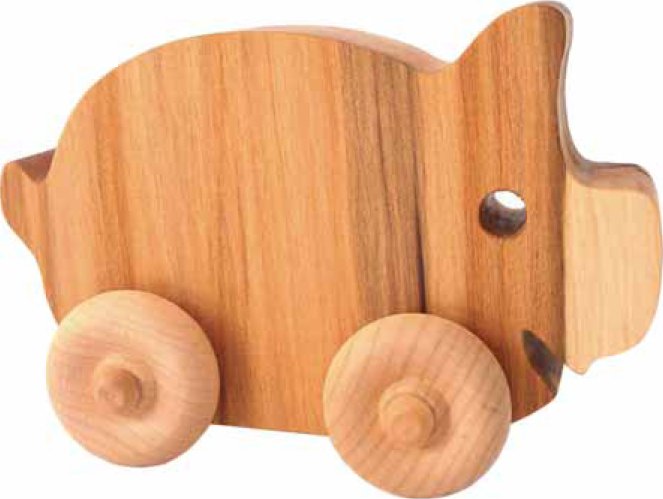European Lime (Tilia x europaea)
Ask enough adults what their favourite material memory is from childhood and the chances are that a high proportion will say wood. Not necessarily a wooden toy but just a chunk of wood, because with a soft piece of wood you can whittle it down to make virtually anything, from airplanes to dolls. Of course children are not going to be familiar with the exact type of wood, but if they were to choose a wood that was soft and easy to cut then they could choose no better than a piece of lime.
Creamy yellow rather than porcelain pale like Japanese maple, lime is the carver’s wood and – like balsa and boxwood – it is one of those contradictory timbers that is a soft hardwood. With its pale close grain and resistance to splitting lime, or basswood as it is sometimes known, is used as the main timber for whittling to create intricate and complex shapes that would be difficult to achieve with many other woods. As such it adds to the craft palette because like no other material, wood, and lime in particular, can empower budding designers and craftsmen. It has such immediate accessibility, requiring only a simple saw, a hammer and nails, some sandpaper and glue to turn even the simplest blocks into toy animals. Lime is a timber that for thousands of years has provided craftsmen with the perfect material for carving.
Image: Toy by Ooh Look it’s a Rabbit

•Lightweight: 535 kg/m3 (34 lbs/ft3)
•Soft and easy to carve
•Excellent resistance to splitting
•Easy to work
•Low stiffness
•Odour free
•Straight, uniform and fine grain
Sources
Throughout Europe and the UK. In the USA it is referred to as American lime or Basswood.
Cost
Lime is relatively inexpensive.
Sustainability issues
This wood species is not listed in the CITES appendices of endangered species.
Production
Lime’s close grain is one of the keys to its resistance to splitting and the reason it carves so well. However, this softness can result in a woolly surface texture. It does not steam bend particularly well but does finish well with stains and varnishes.
Typical applications
Due to its ability to resist splitting, lime finds its best use as a wood for carving. This feature is also utilized for cutting boards in leatherwork and pattern making. It has a wide range of uses for turned products, hat blocks and artificial limbs, and its lack of a strong smell also results in its use in food containers. One of the interesting by-products of lime is ‘wood wool’, which is used as a packing material and is the result of thin shavings.
| + | – |
|
–Easy to work, being particularly good for carving –Glues and finishes well –Straight, even grain –Sustainable |
–Its softness can result in a fuzzy surface –Poor steam bending |
